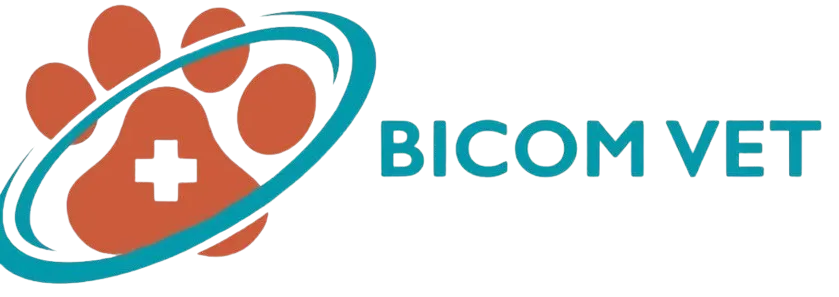
Exploring the Power of Bioenergetic Analysis for Holistic Well-being
Bioenergetic Analysis emerges as a transformative therapy in a world where the connection between mind and body is increasingly recognized as vital to our overall health. This unique bioenergetic therapy, developed by Alexander Lowen, delves deep into the symbiotic relationship between our emotional state and physical form.
Bioenergetic Analysis integrates bodily experiences with psychological insights, acknowledging how chronic muscular tension and posture can reflect and influence our emotional life. It offers a holistic path to healing, uniting the realms of body psychotherapy and mental wellness.
Bioenergetic Analysis offers a comprehensive, therapeutic journey for those seeking a therapy that addresses the entirety of one’s body and mind. This modality promotes psychological healing and enhances physical aliveness and self-expression, making it a compelling choice for modern therapy seekers.
HISTORY AND DEVELOPMENT
In 1956, this vision gave birth to the Institute for Bioenergetic Analysis (IBA), a pioneering step in legitimizing and spreading this therapy. Alexander Lowen's dedication was further exemplified in 1972 when he authored the first training manual, providing a structured approach to Bioenergetic Analysis.
By 1976, the scope of Bioenergetic Analysis had expanded globally, evolving into the International Institute of Bioenergetic Analysis (IIBA). This evolution marked Bioenergetic Analysis's transition from a novel approach to a globally recognized therapeutic practice, offering insight and healing through integrating body and mind.
PRINCIPLES OF BIOENERGETIC ANALYSIS
The principles of Bioenergetic Analysis highlight that these character structures, far from being mere psychological constructs, have profound physical manifestations.
Rigid Character Structure (The Perfectionist):
Originates from early rejection experiences.
Emphasizes attributes like attractiveness and intelligence.
Associated with anxiety, low self-esteem, and physical symptoms like rigid posture.
Masochistic Character Structure (The Endurer):
Develops from controlling or overly needy parenting.
Leads to behaviors like rage suppression and dependency.
Physically, it manifests as thick musculature and stomach blockage.
Psychopathic Character Structure (The Controller/The Leader):
Forms in response to constant criticism.
Results in a false self to avoid rejection, often with narcissistic traits.
Physical signs include muscle rigidity, especially in the pelvic region.
Schizoid Character Structure (The Unwanted Child/The Dreamer):
Arises from real or perceived early rejection or hostility.
It can lead to poor posture, shallow breathing, and low energy effects.
Reflects the deep impact of early neglect or abuse.
Oral Character Structure (The Needy Child):
Results from interrupted care or unmet basic needs.
Exhibits physical symptoms like chest tightness and a thin build.
Emotionally, it may lead to feelings of emptiness or compulsive caretaking.
Bioenergetic Analysis aims to integrate the body and mind through its focus on bodywork and emotional expression. Therapists work to help individuals understand and work with the body, using techniques like body reading and addressing chronic muscular tension. This therapeutic relationship seeks not just to analyze but to transform the physical and emotional aspects of one's being, thereby fostering a deeper understanding of the mind-body connection.
ROLE OF THE THERAPIST IN BIOENERGETIC ANALYSIS
In Bioenergetic Analysis, the therapist plays a pivotal role as a guide and a vital component in the therapeutic relationship. Their primary goal is to enhance the individual's quality of life and overall well-being by delving into therapy's psychological and somatic aspects. Here's an overview of their role:
Creating a Safe Environment:
Therapists provide a secure and nurturing space.
This atmosphere encourages individuals to open up comfortably.
They pay close attention to the body's story, revealed through posture, breathing, and expression.
Conducting Body Work:
Focuses on physical manifestations of tension.
It involves direct work with the body to release unhelpful muscular tension.
It helps in bridging the gap between the body and mind.
Implementing Unique Techniques:
Grounding: Therapists guide individuals to connect with the energy flowing from their body to the ground using techniques like stretching and breathing exercises.
Movement: Encourages expression through movement, particularly in areas where tension is held, like using repetitive actions (e.g., kicking) to release tension.
Containing: Involves controlling specific movements to understand better underlying emotions, such as restraining a rapid foot tap to explore associated feelings.
Supportive Body Contact: Uses therapeutic touch to highlight body tensions or assist in adjusting to safe touch, like supporting the head during leg stretches.
Relational Work:
Central to the therapy is building a strong, supportive therapist-client relationship.
Aids in understanding and modifying the relational aspects of one's character structures.
The therapist in Bioenergetic Analysis is more than just a psychotherapist; they facilitate a more profound understanding between the body and the mind. Their techniques address the physical or emotional aspects in isolation and integrate them to foster a holistic approach to healing and self-awareness.
HOW CAN BIOENERGETIC ANALYSIS HELP?
Bioenergetic Analysis, a unique approach that intertwines physical and psychological health, offers a holistic path to wellness. At its core, this therapy recognizes the profound connection between the mind and the body. Often, emotional distress manifests as physical tension, while bodily discomfort can affect our mental state.
Bioenergetic therapists trained in this intricate discipline understand that energy trapped in the body due to prolonged stress or trauma can lead to various psychological and physical ailments.
This therapy, rooted in concepts developed by Wilhelm Reich and furthered by the International Institute for Bioenergetic Analysis, is especially beneficial for those grappling with these:
Anxiety
Depression
PTSD
Phobias
Panic attacks
Obsessive-compulsive behaviors
By employing techniques that focus on breathing patterns, body expression, and sometimes therapeutic touch, Bioenergetic Analysis helps release trapped energy, fostering a harmonious flow between body and mind. This process alleviates the symptoms of these conditions and promotes a deeper awareness and acceptance of one's bodily sensations and emotional experiences.
For individuals seeking a therapy that addresses the entirety of their experience – the psychological, the physical, and the relational – Bioenergetic Analysis stands out as a holistic and effective choice. It encourages patients to breathe deeply, embrace their affective responses, and reconnect with their authentic selves in the present time.
LIMITATIONS AND CONCERNS
Bioenergetic Analysis offers numerous benefits, but it's important to acknowledge its limitations and concerns. This therapy, which deeply explores the connection between physical and emotional well-being, might only suit some. Individuals with certain psychosomatic conditions or those who are uncomfortable with physical aspects of therapy, such as touch or expressive bodywork, might find this approach challenging.
Bioenergetic Analysis should never substitute for professional psychological or medical advice, especially in cases of severe mental health disorders. Prospective clients must consult a certified bioenergetic therapist and never delay seeking professional advice or treatment based on their observations or what they have read about bioenergetic therapy.
Search Testimonials
It is important to remember that individual anecdotes and testimonials should not be used as the sole basis for making decisions about medical treatments or therapies.
When it comes to alternative therapies like bioresonance, it is essential to rely on evidence-based research and the advice of trained medical professionals. While some people may have positive experiences with bioresonance for their animals, it is important to approach these claims with caution and seek out reliable information from reputable sources.
Ultimately, the decision to pursue bioresonance or any other alternative therapy for your animal should be made in consultation with a veterinarian or animal health professional who can help you weigh the potential benefits and risks.
Pollen – a nuisance for our animal companions too
Hay fever patients are only too familiar with the problem. Year after year the misery begins in the spring with stinging eyes, runny itchy nose and, in severe cases, with a cough and asthma as well. What is perhaps less well known is that our animals too suffer increasingly from this same medical condition.
Just as with humans, the incidence of allergies is also becoming more frequent in animals. Allergic reactions may be provoked by airborne allergens such as pollen, house dust and house dust mites, amongst other factors. Food intolerance is also on the increase, however, and represents a distressing problem for the affected animals.
Now, in spring, as it gets warmer, allergic animals are all suffering as well. With animals it is mainly their skin which itches or else their
noses run more and they occasionally sneeze. Changes in their coats and reddening of the skin are often noticed in the face, feet and ears. These areas often display bloody claw marks and develop into very painful weeping eczema, indicating the severity of the irritation.
This type of problem in animals can be treated with the allergy programs pre-loaded in the Bicom device.
Dr. med. vet. C. May
Quick Links


Facebook
Instagram
Mail